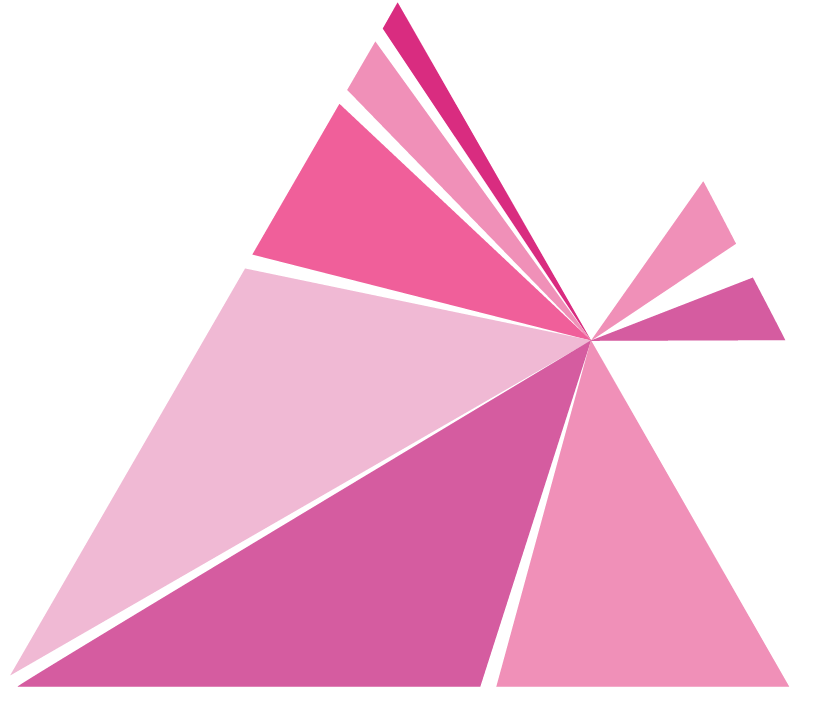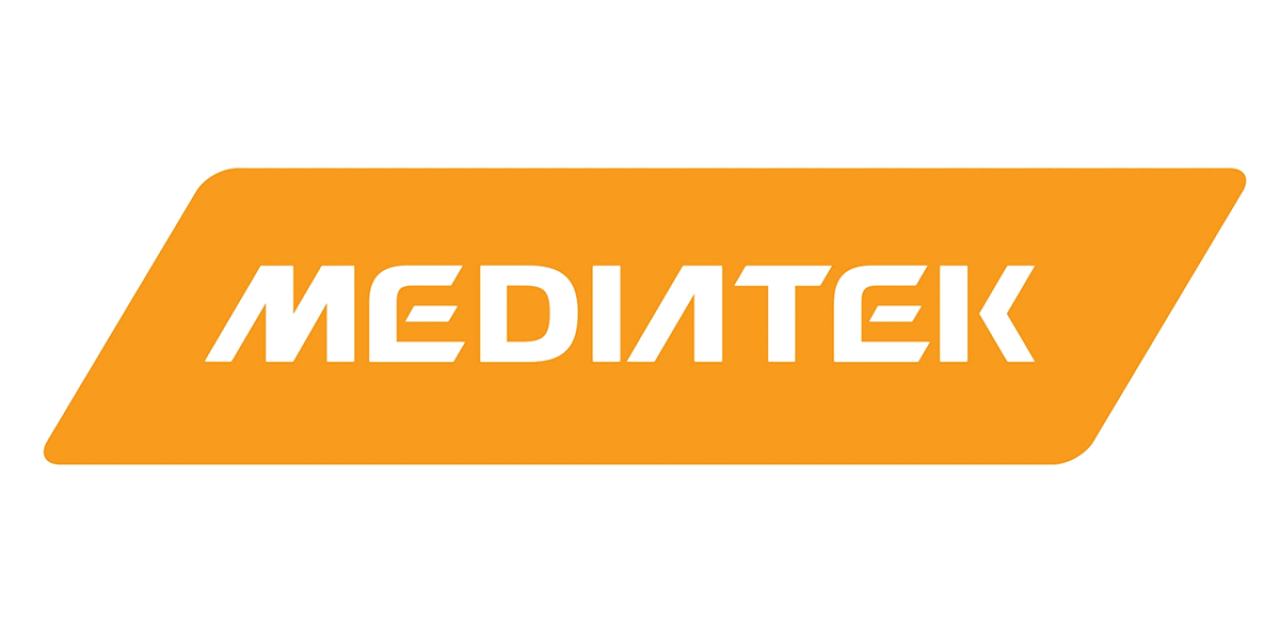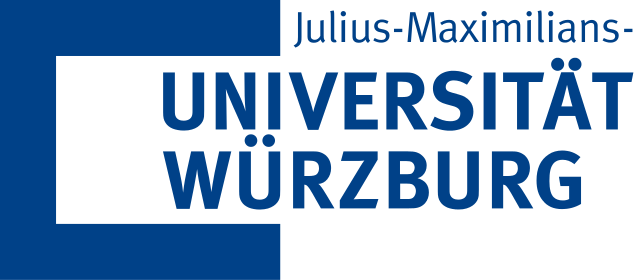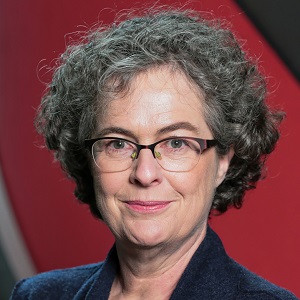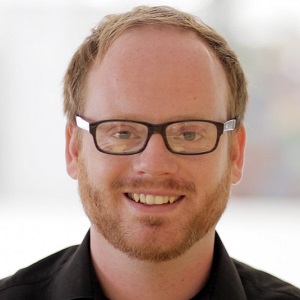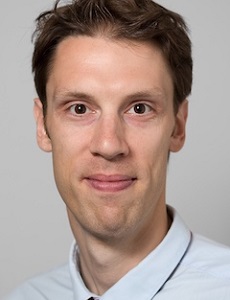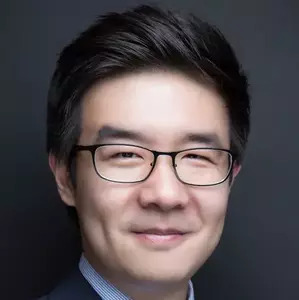papers (pdf, suppl. mat) available at https://eccv2022.ecva.net/
[06:10 UTC] 09:10
Realistic Bokeh Effect Rendering on Mobile GPUs, Mobile AI & AIM 2022 challenge: Report (# 369 )
Andrey Ignatov (ETH Zurich)*; Radu Timofte (University of Wurzburg & ETH Zurich) et al.
[
video][
poster][
page]
[06:20 UTC] 09:20
Adaptive Mask-Based Pyramid Network for Realistic Bokeh Rendering (# 343 )
Kostas Georgiadis (CERTH/ITI); Albert Saà-Garriga (Samsung R&D UK); Mehmet Kerim Yücel (Samsung R&D UK )*; Anastasios Drosou (CERTH-ITI); Bruno Manganelli (Samsung Research UK)
[
video][
poster][
page]
[06:25 UTC] 09:25
Bokeh-Loss GAN: Multi-stage Adversarial Training for Realistic Edge-Aware Bokeh (# 356 )
Brian J Lee (SenseBrain Technology Limited)*; Fei Lei (Tetras.AI); Huaijin Chen (SenseBrain Technology Limited); Alexis Baudron (SenseBrain Technology Limited )
[
video][
poster][
page]
[06:30 UTC] 09:30
Style Adaptive Semantic Image Editing with Transformers (# 329 )
Edward A Günther (ETH Zürich); Rui Gong (ETH Zurich)*; Luc Van Gool (ETH Zurich)
[
video][
poster]
[06:35 UTC] 09:35
Third Time’s the Charm? Image and Video Editing with StyleGAN3 (# 330 )
Yuval Alaluf (Tel Aviv University)*; Or Patashnik (Tel Aviv University); Zongze Wu (Hebrew University of Jerusalem); Asif Zamir (Tel Aviv university ); Eli Shechtman (Adobe Research, US); Dani Lischinski (The Hebrew University of Jerusalem); Danny Cohen-Or (Tel Aviv University)
[
video][
poster][
project]
[06:40 UTC] 09:40
CNSNet: A Cleanness-Navigated-Shadow Network for Shadow Removal (# 331 )
Qianhao Yu (University of Science and Technology of China); Naishan Zheng (University of Science and Technology of China); Jie Huang (University of Science and Technology of China); Feng Zhao (University of Science and Technology of China)*
[
video][
poster]
[06:45 UTC] 09:45
Unifying Conditional and Unconditional Semantic Image Synthesis with OCO-GAN (# 332 )
Marlène Careil (Facebook/Télécom Paris)*; Stéphane Lathuilière (Telecom-Paris); Camille Couprie (FAIR); Jakob Verbeek (Facebook)
[
video][
poster]
[07:30 UTC] 10:30
Efficient Single-Image Depth Estimation on Mobile Devices, Mobile AI & AIM 2022 Challenge: Report (# 366 )
Andrey Ignatov (ETH Zurich)*; Grigory Malivenko (AI); Radu Timofte (University of Wurzburg & ETH Zurich) et al.
[
video][
poster][
page]
[07:40 UTC] 10:40
Hybrid Transformer Based Feature Fusion for Self-Supervised Monocular Depth Estimation (# 336 )
Snehal Singh Tomar (Indian Institute of Technology Madras)*; Maitreya Suin (Indian Institute of Technology Madras); Rajagopalan N Ambasamudram (Indian Institute of Technology Madras)
[
video][
poster][
slides]
[07:45 UTC] 10:45
LiteDepth: Digging into Fast and Accurate Depth Estimation on Mobile Devices (# 348 )
Zhenyu Li (Harbin Institute of Technology)*; Zehui Chen (University of Science and Technology of China); Jialei Xu (Harbin Institute of Technology); Xianming Liu (Harbin Institute of Technology); Junjun Jiang (Harbin Institute of Technology)
[
video][
poster][
project]
[07:50 UTC] 10:50
U-Shape Transformer for Underwater Image Enhancement (# 335 )
Lintao Peng (Beijing Institute of Technology); Chunli Zhu (Beijing Institute of Technology); Liheng Bian (Beijing Institute of Technology)*
[
video][
poster]
[07:55 UTC] 10:55
Multi-Patch Learning: Looking More Pixels in the Training Phase (# 351 )
Lei Li (ByteDance Inc)*; Jingzhu Tang (Xidian University); Ming Cheng (ByteDance Inc); Shijie Zhao (Bytedance Inc.); Junlin Li (ByteDance Inc.); Li Zhang (Bytedance Inc.)
[
video][
poster]
[08:30 UTC] 11:30
Learned Smartphone ISP on Mobile GPUs with Deep Learning, Mobile AI & AIM 2022 Challenge: Report (# 365 )
Andrey Ignatov (ETH Zurich)*; Radu Timofte (University of Wurzburg & ETH Zurich) et al.
[
video][
poster][
page]
[08:40 UTC] 11:40
Residual Feature Distillation Channel Spatial Attention Network for ISP on Smartphone (# 357 )
yaqi wu (Harbin Institute of Technology)*; Jas zheng (zhejiang university); zhihao Fan (University of Shanghai for Science and Technology); Xun Wu (school of software, tsinghua university); Feng Zhang (AIS)
[
video][
poster]
[08:45 UTC] 11:45
Real-Time Under-Display Cameras Image Restoration and HDR on Mobile Devices (# 372 )
Marcos V. Conde (University of Würzburg)*; Florin-Alexandru Vasluianu (Computer Vision Lab, University of Wurzburg); Sabari Nathan (Couger Inc, Tokyo); Radu Timofte (University of Wurzburg & ETH Zurich)
[
video][
poster][
page]
[08:50 UTC] 11:50
CEN-HDR: Computationally Efficient Neural Network for Real-Time High Dynamic Range Imaging (# 340 )
Steven Tel (University of Burgundy, France)*; Barth Heyrman (University of Burgundy, France); Dominique Ginhac (Le2i - University of Burgundy, France)
[
video][
poster]
[08:55 UTC] 11:55
MicroISP: Processing 32MP Photos on Mobile Devices with Deep Learning (# 370 )
Andrey Ignatov (ETH Zurich)*; Anastasia Sycheva (Altersis Performance); Radu Timofte (University of Wurzburg & ETH Zurich); Yu Tseng (mediatek); Yu-Syuan Xu (MediaTek); Po-Hsiang Yu (Mediatek); Cheng-Ming Chiang (MediaTek Inc.); Hsien-Kai Kuo (MediaTek); Min-Hung Chen (Microsoft); Chia-Ming Cheng (MediaTek); Luc Van Gool (ETH Zurich)
[
video][
poster][
page]
[09:30 UTC] 12:30
Reversed Image Signal Processing and RAW Reconstruction. AIM 2022 Challenge Report (# 363 )
Marcos V. Conde (University of Würzburg)*; Radu Timofte (University of Wurzburg & ETH Zurich); et al.
[
video][
page]
[09:40 UTC] 12:40
Learned Reverse ISP with Soft Supervision (# 347 )
Beiji Zou (Central South University); Yue Zhang (Central South University)*
[
video][
poster][
slides]
[09:50 UTC] 12:50
RISPNet: A Network for Reversed Image Signal Processing (# 344 )
Xiaoyi Dong (Institute of Automation, Chinese Academy of Sciences)*; Yu Zhu (School of Computer Science and Engineering,Anhui University); Chenghua Li (Institute of Automation Chinese Academy of Sciences); Peisong Wang (Institute of Automation, Chinese Academy of Sciences); Jian Cheng ("Chinese Academy of Sciences, China")
[
video][
poster
[09:55 UTC] 12:55
Reversing Image Signal Processors by Reverse Style Transferring (# 360 )
Furkan Osman Kınlı (Özyeğin University)*; Barış Özcan (Özyeğin University); Furkan Kirac (Ozyegin University)
[
video][
slides]
[10:00 UTC] 13:00
Overexposure Mask Fusion: Generalizable Reverse ISP Multi-step Refinement (# 361 )
Jinha Kim (MIT); Jun Jiang (SenseBrain Research (USA))*; Jinwei Gu (SenseBrain)
[
video][
poster][
page]
[11:30 UTC] 14:30
Efficient and Accurate Quantized Image Super-Resolution on Mobile NPUs, Mobile AI \& AIM 2022 challenge: Report (# 367 )
Andrey Ignatov (ETH Zurich)*; Radu Timofte (University of Wurzburg & ETH Zurich); Maurizio Denna (Synaptics); Abdel Younes (Synaptics) et al.
[
video][
page]
[11:40 UTC] 14:40
Efficient Image Super-Resolution Using Vast-Receptive-Field Attention (# 333 )
Lin Zhou (Shenzhen Institues Of Advanced Technology, Chinese Academy of sciences); Haoming CAI (University of Maryland, College Park)*; Jinjin Gu (The University of Sydney); Zheyuan Li (SIAT); Yingqi Liu (Shenzhen Institute of Advanced Technology); Xiangyu Chen (University of Macau; SIAT); Yu Qiao (Shenzhen Institutes of Advanced Technology, Chinese Academy of Sciences); Chao Dong (SIAT)
[
video][
poster][
slides][
page]
[11:45 UTC] 14:45
Fast Nearest Convolution for Real-Time Efficient Image Super-Resolution (# 352 )
Ziwei Luo (Uppsala)*; Youwei Li (Megvii); lei yu (Megvii); Qi Wu (Megvii); wen zhihong (MEGVII technology); Haoqiang Fan (Megvii Inc(face++)); Shuaicheng Liu (UESTC; Megvii)
[
video][
poster][
slides]
[11:50 UTC] 14:50
Real-Time Channel Mixing Net for Mobile Image Super-Resolution (# 353 )
Garas Gendy (Shanghai Jiao Tong University ); nabil sabor (Assiut University); Jingchao Hou (Shanghai Jiao Tong University); Guanghui He (Shanghai Jiao tong University)*
[
video][
poster][
YouTube
[11:55 UTC] 14:55
DSR: Towards Drone Image Super-Resolution (# 339 )
Xiaoyu Lin (EPFL)*; Baran Ozaydin (EPFL); Vidit Vidit (EPFL); Majed El Helou (EPFL); Sabine Süsstrunk (EPFL)
[
video][
poster]
[12:00 UTC] 15:00
Evaluating Image Super-resolution Performance on Mobile Devices: An Online Benchmark (# 328 )
Xindong Zhang (The Hong Kong Polytechnic University); Hui Zeng (OPPO); Lei Zhang ("Hong Kong Polytechnic University, Hong Kong, China")*
[
video][
poster]
[12:05 UTC] 15:05
Image Super-Resolution with Deep Variational Autoencoders (# 341 )
Darius Chira (DTU)*; Ilian O Haralampiev (DTU); Ole Winther (DTU and KU); Andrea Dittadi (Technical University of Denmark); Valentin V.D.J. Liévin (Technical University of Denmark)
[
video][
poster][
slides]
[12:10 UTC] 15:10
XCAT – Lightweight Quantized Single Image Super-Resolution Using Heterogeneous Group Convolutions and Cross Concatenation (# 346 )
Mustafa Ayazoglu (Aselsan Research)*; Bahri Batuhan Bilecen (Aselsan Research)
[
video][
poster][
slides][
YouTube]
[12:15 UTC] 15:15
RCBSR: Re-Parameterization Convolution Block for Super-Resolution (# 350 )
Si Gao (State Key Laboratory of Mobile Network and Mobile Multimedia Technology, ZTE Corporation); Chengjian Zheng (State Key Laboratory of Mobile Network and Mobile Multimedia Technology, ZTE Corporation)*; Xiaofeng zhang (State Key Laboratory of Mobile Network and Mobile Multimedia Technology, ZTE Corporation); shaoli liu (State Key Laboratory of Mobile Network and Mobile Multimedia Technology, ZTE Corporation); Biao Wu (State Key Laboratory of Mobile Network and Mobile Multimedia Technology, ZTE Corporation); Kaidi Lu (State Key Laboratory of Mobile Network and Mobile Multimedia Technology, ZTE Corporation); Diankai Zhang (State Key Laboratory of Mobile Network and Mobile Multimedia Technology, ZTE Corporation); Ning Wang (State Key Laboratory of Mobile Network and Mobile Multimedia Technology,ZTE Corporation)
[
video][
poster]
[12:20 UTC] 15:20
Unified Transformer Network for Multi-Weather Image Restoration (# 338 )
Ashutosh C Kulkarni (Indian Institute of Technology, Ropar)*; Shruti S Phutke (Indian Institute of Technology Ropar); Subrahmanyam Murala (IIT Ropar)
[
video][
poster]
[12:25 UTC] 15:25
MSSNet: Multi-Scale-Stage Network for Single Image Deblurring (# 349 )
Kiyeon Kim (POSTECH); Seungyong Lee (POSTECH); Sunghyun Cho (POSTECH)*
[
video][
poster][
page]
[12:30 UTC] 15:30
Power Efficient Video Super-Resolution on Mobile NPUs with Deep Learning, Mobile AI & AIM 2022 challenge: Report (# 368 )
Andrey Ignatov (ETH Zurich)*; Radu Timofte (University of Wurzburg & ETH Zurich); Cheng-Ming Chiang (MediaTek Inc.); Hsien-Kai Kuo (MediaTek); Yu-Syuan Xu (MediaTek); My Lee (MediaTek); Allen Lu (MediaTek); Chia-Ming Cheng (MediaTek); Chih-Cheng Chen (MediaTek); Jia-Ying Yong (MediaTek); Hong-Han Shuai (National Yang Ming Chiao Tung University); Wen-Huang Cheng (National Yang Ming Chiao Tung University) et al.
[
video][
page]
[12:40 UTC] 15:40
Sliding Window Recurrent Network for Efficient Video Super-Resolution (# 354 )
Wenyi Lian (Uppsala University)*; Wenjing Lian (Northeastern University)
[
video][
poster][
slides]
[12:45 UTC] 15:45
EESRNet: A Network for Energy Efficient Super-Resolution (# 355 )
Shijie Yue (North China University of Technology)*; Chenghua Li (Institute of Automation Chinese Academy of Sciences); Zhengyang Zhuge ( Institute of Automation, Chinese Academy of Sciences ); Ruixia Song (North China University of Technology)
[
video][
poster][
slides]
[12:50 UTC] 15:50
Light Field Angular Super-Resolution via Dense Correspondence Field Reconstruction (# 342 )
Yu Mo (National University of Defense Technology); Yingqian Wang (National University of Defense Technology )*; Longguang Wang (National University of Defense Technology); Jungang Yang (National University of Defense Technology); Wei An (National University of Defense Technology)
[
video]
[12:55 UTC] 15:55
Towards Real-World Video Deblurring by Exploring Blur Formation Process (# 337 )
Mingdeng Cao (Tsinghua University); Zhihang Zhong (The University of Tokyo); Yanbo Fan (Tencent AI Lab); Jiahao Wang (Tsinghua University); Yong Zhang (Tencent AI Lab); Jue Wang (Tencent AI Lab); Yujiu Yang (Tsinghua University)*; Yinqiang Zheng (The University of Tokyo)
[
video][
poster][
slides]
[13:30 UTC] 16:30
AIM 2022 Challenge on Super-Resolution of Compressed Image and Video: Dataset, Methods and Results (# 371 )
Ren Yang (ETH Zurich)*; Radu Timofte (University of Wurzburg & ETH Zurich) et al.
[
video][
page]
[13:40 UTC] 16:40
CIDBNet: A Consecutively-Interactive Dual-Branch Network for JPEG Compressed Image Super-Resolution (# 345 )
Xiaoran Qin (Institute of Automation, Chinese Academy of Sciences); Yu Zhu (School of Computer Science and Engineering,Anhui University); Chenghua Li (Institute of Automation Chinese Academy of Sciences)*; Peisong Wang (Institute of Automation, Chinese Academy of Sciences); Jian Cheng ("Chinese Academy of Sciences, China")
[
video][
poster][
page]
[13:45 UTC] 16:45
HST: Hierarchical Swin Transformer for Compressed Image Super-Resolution (# 358 )
Bingchen Li (Unversity of Science and Technology of China); Xin Li (University of Science and Technology of China); yiting lu (University of Science and Technology of China); Sen Liu (University of Science and Technology of China); Ruoyu Feng (University of Science and Technology of China); Zhibo Chen (University of Science and Technology of China)*
[
video][
poster]
[13:50 UTC] 16:50
Swin2SR: SwinV2 Transformer for Compressed Image Super-Resolution and Restoration (# 359 )
Marcos V. Conde (University of Würzburg)*; CHOI Ui-Jin (MegastudyEdu); Maxime Burchi (University of Würzburg); Radu Timofte (University of Wurzburg & ETH Zurich)
[
video][
page]
[14:30 UTC] 17:30
AIM 2022 Challenge on Instagram Filter Removal: Methods and Results (# 364 )
Furkan Osman Kınlı (Özyeğin University)*; Sami Menteş (Ozyegin University); Barış Özcan (Özyeğin University); Furkan Kirac (Ozyegin University); Radu Timofte (University of Wurzburg & ETH Zurich) et al.
[
video][
slides][
page]
[14:40 UTC] 17:40
CAIR: Fast and Lightweight Multi-Scale Color Attention Network for Instagram Filter Removal (# 362 )
Woon-Ha Yeo (Sahmyook University)*; Wang-Taek Oh (Sahmyook University); Kyung-Su Kang (Sahmyook University); Young-Il Kim (Sahmyook University); Han-Cheol Ryu (Sahmyook University)
[
video][
poster][
slides]
[14:45 UTC] 17:45
Unsupervised Scene Sketch to Photo Synthesis (# 334 )
Jiayun Wang (UC Berkeley / ICSI)*; Sangryul Jeon (UC Berkeley); Stella X Yu (UC Berkeley / ICSI); Xi Zhang (Amazon); Himanshu Arora (Amazon); Yu Lou (Amazon)
[
video][
slides][
project]
